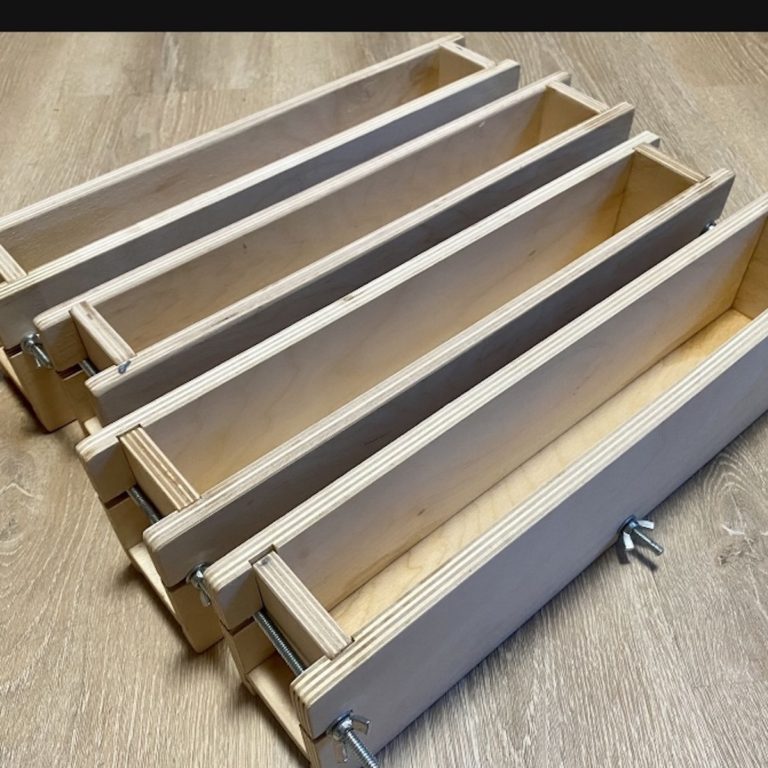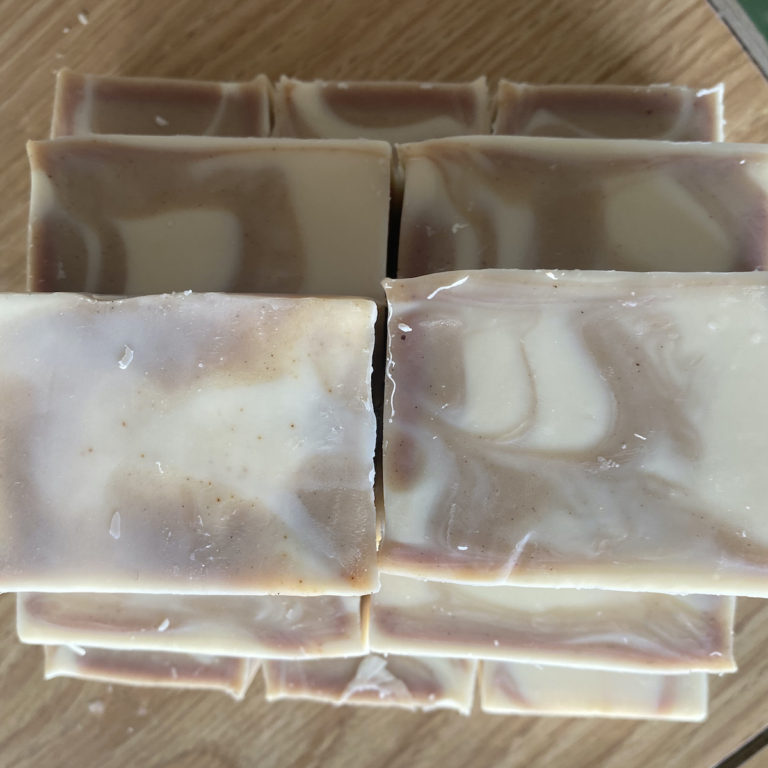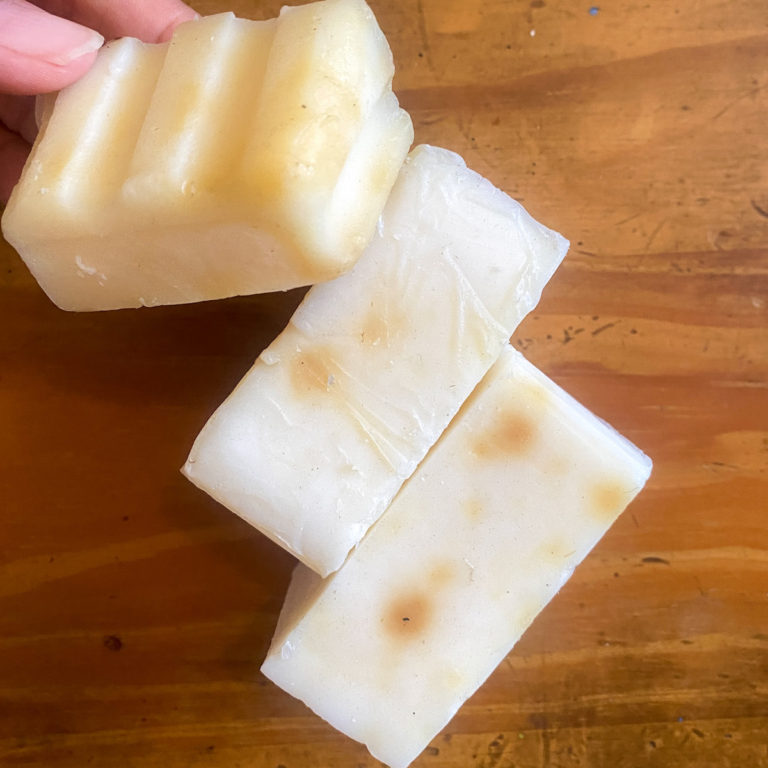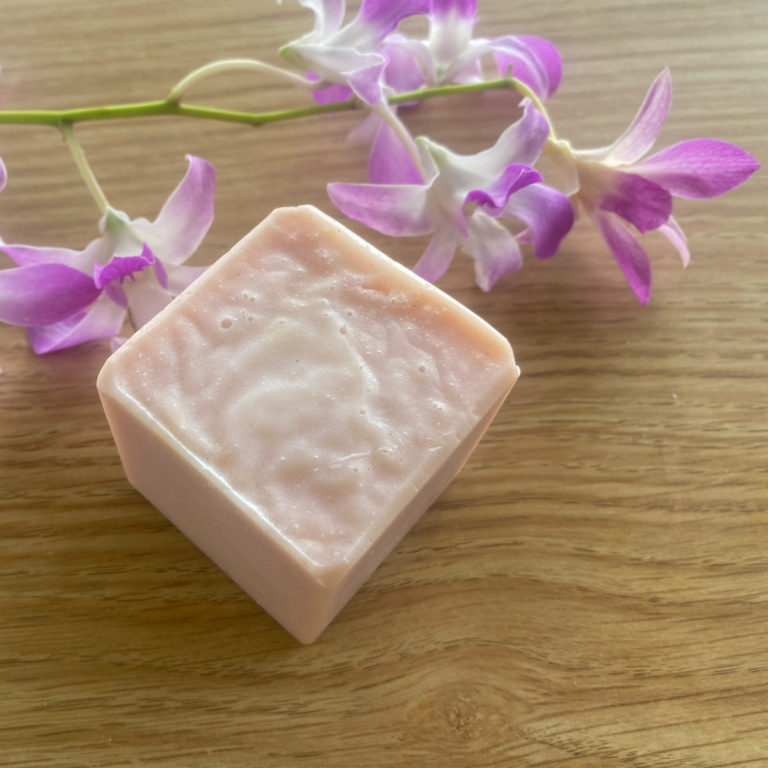Bentonite Clay Soap Recipe – How To Make This Silky, Deep Cleansing Bar
Here’s a beautiful bentonite clay soap recipe that uses my favorite soap making technique – cold process. This clay is fairly easy to incorporate, as long as you use the right amount and prepare well (to prevent clumping).
Formed from volcanic ash, bentonite clay is naturally occurring and full of trace minerals like iron, copper, silica, zinc, magnesium, and calcium.
Benefits Of Using A Bentonite Clay Soap Recipe
Bentonite clay is highly absorbent and has a negative charge. Therefore, it’s effective in attracting and removing toxins and impurities (which have positive electrical charges) from the skin.
All clays, including this one, add a touch of silkiness to a soap’s lather.
Bentonite is different from other clays because of how strong a “pull” it has. If you’ve ever used different types of clay masks before, you may have noticed how intense the bentonite clay felt versus the others. That intense pull is what makes this soap so effective at deep cleansing pores. It gives skin a little mini-detox of sorts. It’s quite rejuvenating.
Plus bentonite clay is easy to find in many health food stores, soaping supply shops, and online. The clay lasts forever as long as you store it somewhere dry.
Bentonite Clay Soap Recipe

- 1 lb recipe (454 grams of soap batter which should fit perfectly in a standard 1lb mold, and will produce 317.8 grams soap once the excess water evaporates out)
- 5% superfatted
- if using essential oils as fragrance, the fragrance ratio is 0.3oz/lb
- usage rate of Bentonite Clay is 1 tsp per lb of oils (PPO)
TOOLS/EQUIPMENT
- Soap mold that can hold at least 1lb of batter, lined if applicable (or learn how to make soap without a mold)
- Scale that has the ability to measure in grams
- Digital thermometer
- Safety goggles for eye protection
- 2 lye-safe plastic containers (one that is large enough to hold the full amount of your lye + water)
- Sieve/strainer
- Stainless steel pot large enough to hold your entire batch of soap batter and still leave some extra room at the top to account for splashing
- Large container to measure soft oils
- Stick blender
- Rubber spatula
- Soap cutter, knife, or cheese cutter to slice finished soap
- Optional: gloves to protect your hands
INGREDIENTS
Note: ingredients are measured in grams
LYE SOLUTION
- Water: 67.9 g
- Lye: 45.2 g
HARD FATS
- Shea butter: 28.6 g
- Pure soy wax (such as Golden Brands 464): 28.6 g
- Coconut oil: 101.7 g
SOFT FATS
- Castor oil: 15.9 g
- Olive oil: 143 g
CLAY ADDITIVE
- Bentonite clay: 1 tsp
OPTIONAL
- 9.5 g essential oils of your choice
Some other clay soap recipes (like my kaolin clay soap recipe) use higher amounts of clay. The reason I’m only using 1 tsp per pound of oils here is because bentonite is a stronger clay that’s a little more drying. Kaolin is very gentle and therefore can be used in higher amounts than something as strong as bentonite. That being said, this recipe is just my preference and can be used as your starting point. If you would like to adjust the amount of clay used, feel free to do so.
INSTRUCTIONS (USING THE COLD-PROCESS METHOD)
NOTE: Lye (sodium hydroxide) is used to make soap and this stuff is serious. Before anything else, read up on lye safety for soap makers ASAP, and refer to it over and over until you’ve got it down pat.
What you’ll find below are basic instructions for those who have a little bit of experience with soaping.
If you’re new to soaping, please carefully read my most detailed step-by-step instructions (a guide for beginners) in this post about the cold process method of soap making.
- Gather ingredients and equipment
- Measure out your bentonite clay
- Measure your distilled water into a lye-safe plastic container
- If you’re using essential oils, measure them out and mix the clay into it so the essential oils soak into the clay, which will help to anchor the scent. If you’re not using essential oils, take a small amount of the distilled water you just measured, and mix it in with your clay (just enough to get it to the consistency of a thick milkshake)
- Measure out lye into a separate lye-safe plastic container
- Slowly add your lye to your water, stirring to dissolve the lye
- Set lye solution aside someplace safe until it cools down to 100-120 degrees Fahrenheit
- Measure out your hard oils into a pot and heat it on low until melted. Upon oils melting, remove immediately from the heat source. Set it aside to cool to 110-130 degrees Fahrenheit (check with your digital thermometer periodically) while you move on to the next steps.
- Measure out your soft oils and set them aside. Add them to the pot of melted hard oils when the melted hard oils are between 110-130 degrees.
- Slowly pour your lye solution through your sieve, into the pot of oils
- Use your stick blender (set to OFF) to stir to begin combining the lye solution and oils for about a minute
- With the head of the immersion blender still fully submersed, turn the blender on and stir/blend for about a minute
- Let the soap batter rest and thicken up for about a few minutes
- Again stir with the blender set to OFF for a minute, blend for a minute, then rest for a few minutes. Repeat until your batter has reached your desired level of trace, adding your clay mixture prior to your desired level of trace being reached (remember clay speeds trace)
- Carefully pour your soap batter into your lined mold
- Set your soap aside someplace safe.
- Wait 24-36 hours before unmolding and cutting.
- Cure soap for 4-6 weeks before use by setting it somewhere cool and dry. This is important because it will allow the soap molecules to crystallize and water to evaporate, leaving you with a nice hard bar of soap that’s gentle on skin and creates a great lather.
Final Thoughts On This Bentonite Clay Soap Recipe
I hope you enjoy this recipe and the benefits of bentonite clay. I think you’ll find it to be a great deep cleanser that helps to increase circulation in the skin.







